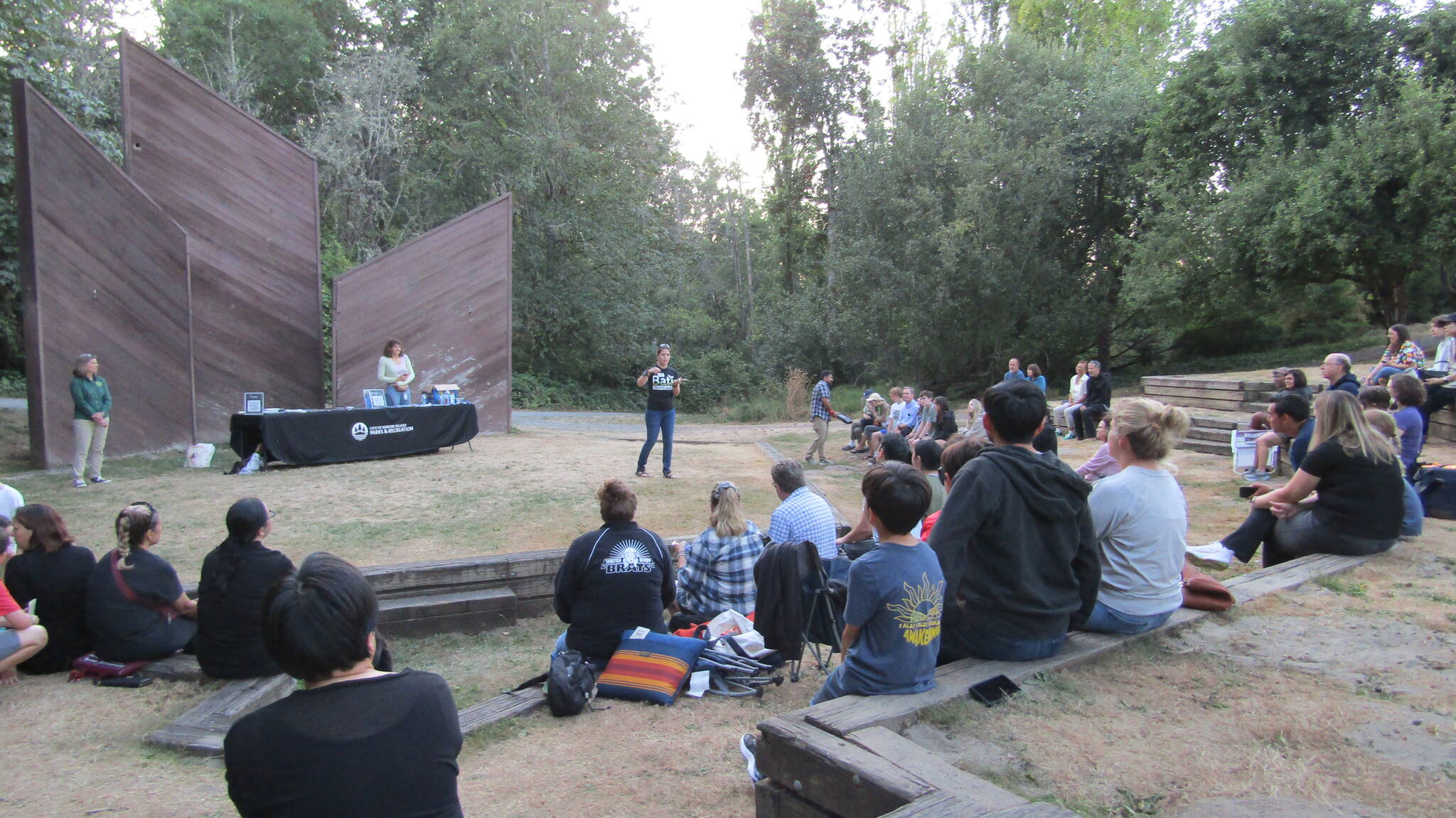On the evening of Aug. 7, Mercer Island Parks and the Woodland Park Zoo presented Bat Night at Luther Burbank Park. The event taught the dozens of community attendees to look for, track, and learn more about local bat populations and the Bat Activity Trends (BAT) project.
Niki Desautels is a conservation education specialist for the Woodland Park Zoo and helped lead the “community science project.”
Bats are most active from June to September, and it is easiest to see them (and track them) when it is getting dark — but with enough light to see their silhouettes, Desautels said. Bats that are local to the area and to Luther Burbank are small, like the Myotis Evotis, Hoary bat, Little Brown bat and Big Brown bat.
To participate in the BAT project, all participants do is watch an area of trees and count how many times a bat “passes.” Anyone can take this data and then enter it in FieldScope, a database by the Woodland Park Zoo that can use that information for scientific work being conducted. FieldScope can be found at https://bat.fieldscope.org.
“Bat activity tells us a lot about habitat, how much it’s utilized, if it has everything the bats need, and if there’s no bats here, we can look into what’s going on,” Desautels said. “We don’t have a lot of baseline data in Washington state about bats.”
Throughout the evening, Desautels used a pocket-sized ultrasonic microphone to pick up echolocation calls. It is 70% accurate, Desautels said, and plugs into a phone.
“Bats have gotten a bad rap for a long time,” Desautels said. “That’s why we do things like this, so people know about them and more students will go into researching them.”
This reporter participated in the bat tracking activity, and can personally vouch for the 30 minutes spent watching the trees and darkening sky being some very peaceful ones.


